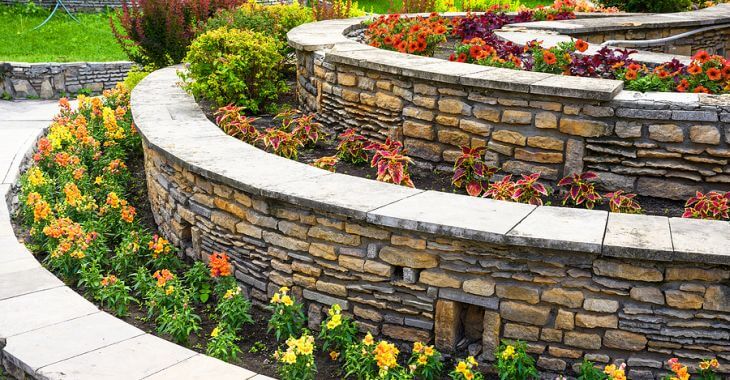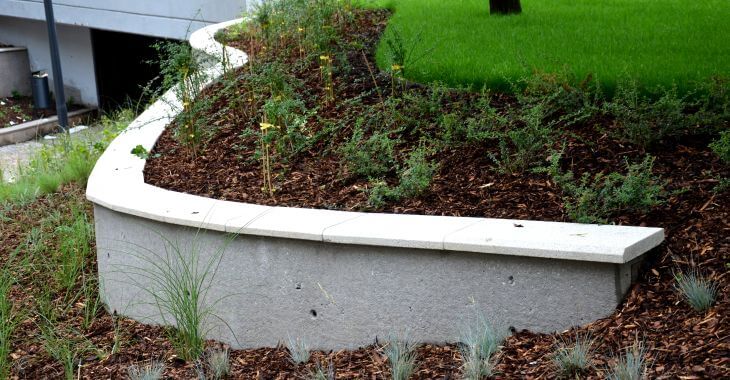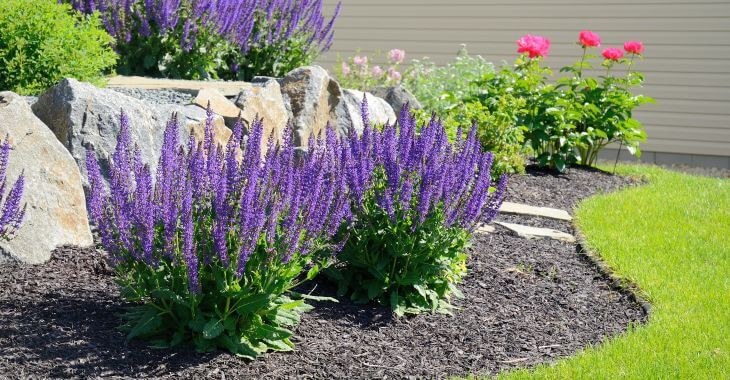What Is a Retaining Wall and How Are They Used?

Retaining walls are a type of hardscape feature that is used for many purposes in landscaping. While they may look decorative, there are many functional reasons for adding a retaining wall to your property. What is a retaining wall and how are these features used in landscaping?
What Is a Retaining Wall?
A retaining wall uses wood, stone or other materials to support or brace soil laterally. The material is stacked to hold soil inside or to push it backward to avoid erosion. There are several popular options when building a retaining wall, including:
- Landscape timbers
- River rock
- Brick
- Fieldstone or flagstone
- Cement pavers
- Poured concrete
- Wood
The material used depends on the goal and use of the retaining wall. To brace a large hill, you may need heavy stone, while small decorative retaining walls may be made from almost any material. If aesthetics is a concern, materials that achieve the desired appearance are used.
Uses for Retaining Walls
Retaining walls provide a barrier that holds soil in a desired place. These walls are used in commercial, industrial and residential settings for a variety of purposes, from stabilizing slopes and hills to creating useful terraces or living spaces. What is a retaining wall used for? Here are a few uses.
- Erosion Control
- Slopes and hills that are prone to erosion or mudslides can benefit from a retaining wall. A solid wall can hold back tons of soil and water, keeping it from sliding into undesirable areas. You will see these walls along roads, driveways and other areas to stop landslides from occurring.
- Slope Terraces
- Retaining walls have been used for centuries to create useful terraces for planting and other uses on slopes and hills. These walls create flat “steps” down a sloped area for agricultural purposes or for patios or other uses. These flat levels help stop erosion and increase the value of the property.
- Sunken Patios
- Retaining walls can be used to create a sunken patio or firepit area. The walls hold back the surrounding soil and create a lovely outdoor space. These sunken spaces can be built into a sloped or hilly backyard to create interesting spaces built into the raised soil.
- Raised Retaining Walls
- Retaining walls can also be built above ground to hold soil. Raised garden or flower beds can be created with four sides for beautiful focal features for landscaping. Small, raised walls can be used as borders for landscape beds around structures or as edging along a property line.
- Restricting Foliage
- Retaining walls can stop the intrusion of foliage, creating a barrier between brush, trees and invasive plants and your property. These can be used along property lines, roads and other areas, stopping vines and other plants from encroaching.
Building Retaining Walls
A retaining wall requires multiple skills to build, especially when used to brace a hillside or slope. You need to understand the amount of weight the wall will need to support and how to allow for water flow and other factors that will impact the wall.
Small retaining walls that are less than three feet high are easier to install, but still require extensive planning. Using the right materials and process are important to ensure that the wall will be able to sustain under the soil pressure.
Any major retaining wall that will be supporting excessive soil and groundwater should be built by a professional. The weight of earth can be substantial and a poorly built retaining wall can create risk for property damage and injuries.
Raised retaining walls are less risky to build as they do not support heavy weights. For flowerbeds, gardens, property edging and other raised walls, many of these can be built by DIY homeowners that enjoy building stone, masonry or wood structures.
Benefits of Retaining Walls
Retaining walls can be a valuable addition to any property. Whether you are using the wall to control erosion or flooding or it is creating a stunning focal point, you can enjoy the benefits for many years to come. Some of the benefits of investing in a retaining wall include:
- Protecting your property against erosion and water damage
- Adding useful structures to your property
- Improving the versatility of your property
- Creating beautiful focal features
- Enhancing the curb appeal of your home
There are so many ways that retaining walls can be used and unlimited options in design. Whether you want a natural stone, classic brick, sleek pavers or rustic wood appearance, there are many options for creating a functional and attractive retaining wall.

What is a retaining wall and how can it benefit your property? If you are interested in adding a retaining wall to your property, talk to your local landscaping company that offers hardscape installations. They can recommend the best way to enhance your property with a new retaining wall.
